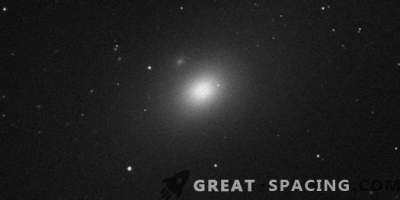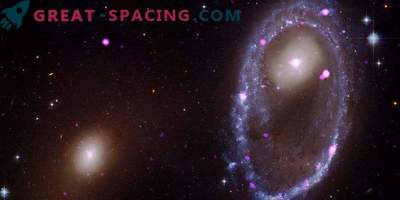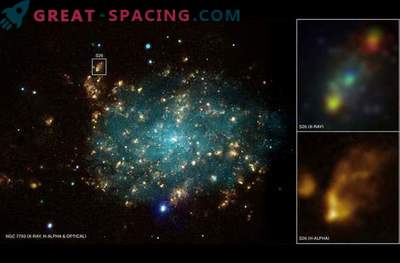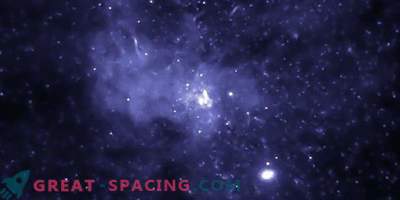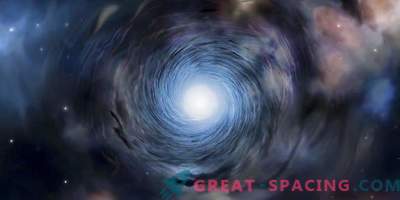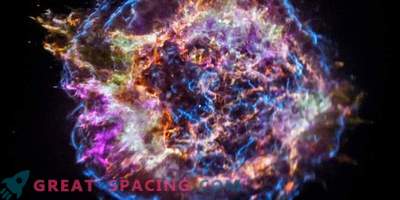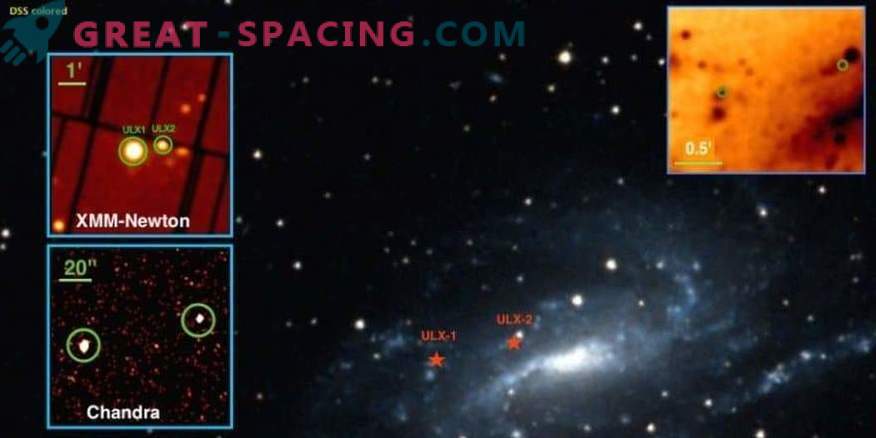
DSS image of NGC 925, where red stars represent the positions of ULX-1 and ULX-2
European scientists examined two superluminal x-ray sources (ULX) located in a spiral galaxy with a jumper NGC 925. The findings hint at the real nature of the two sources and help improve the overall understanding of ULX.
ULX - point celestial sources that are so bright in X-rays that each releases more radiation than a million suns at all wavelengths. They are inferior in luminescence to active galactic nuclei, but they glow more consistently than any known stellar process. Despite numerous studies, the nature of these sources is still incomplete.
Usually in the galaxy you can find one ULX, but in some there are many. At a distance of 28 million light years, there is a galaxy NGC 925 with two superluminal x-ray sources ULX-1 and ULX-2. The study analyzed data from observations provided by the XMM-Newton spacecraft (ESA) and the NASA NuSTAR nuclear spectroscopic telescope. The analysis also included archived data from the Chandra space observatory. ULX-1 and ULX-2 are two superluminal x-ray sources in the galaxy NGC 925, the distance between which reaches 8.5 Mpc. It turned out that the ULX-1 reached a peak brightness of up to 40 decillion erg / s, making it one of the brightest among the well-known ULX.
The spectral properties of ULX-1 can be associated with a single optically thick component of the comptonization with an electron temperature of 3.5 keV and a photon temperature of 0.15 keV. Conclusions suggest that this source cannot be an intermediate mass black hole. The available data did not help classify ULX-2, and its spectral properties are not consistent with the thermally mild state of the x-ray binary or intermediate-mass black hole. More complete analysis will require more observations.
